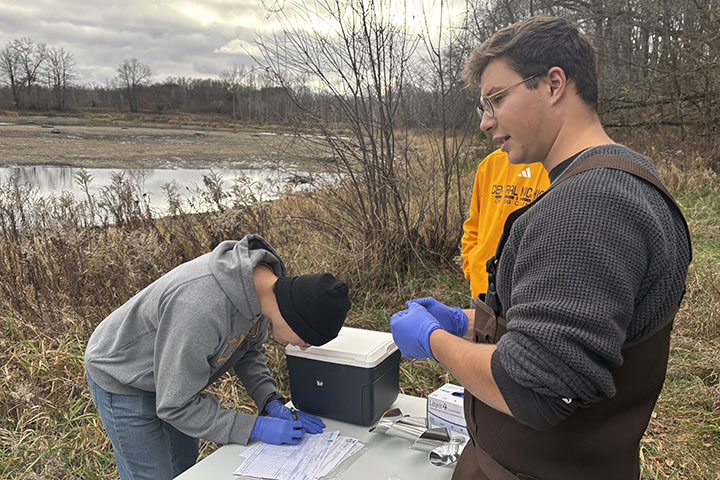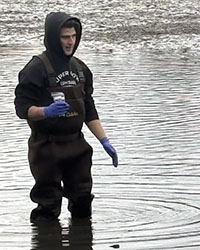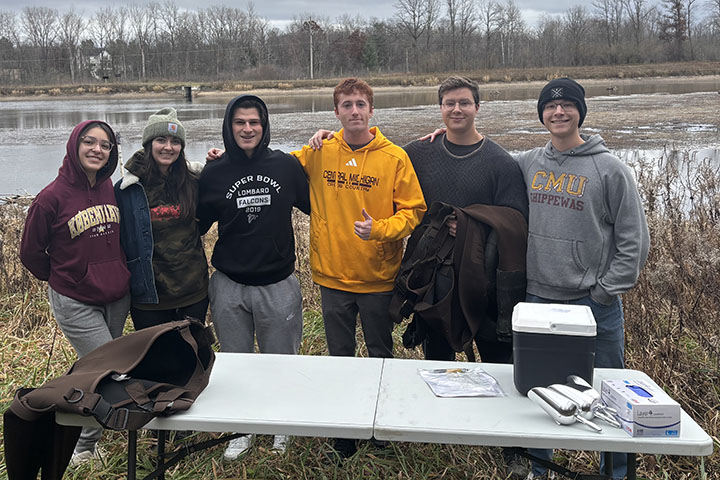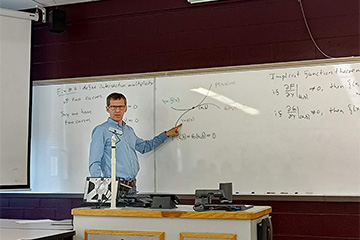Capstone project could help restore ponds
Students to present plans to state officials for contaminated water

Six Central Michigan University students will present state officials with recommendations about putting two fish-rearing ponds back into use in the West Michigan community of Belmont.
The students are producing the recommendations as part of their environmental engineering capstone project.
Their efforts build off earlier work by CMU students, including one who brought the ponds’ contamination to the attention of state officials. The DNR stopped using the ponds out of an abundance of caution for human health.
The recommendations focus on reducing concentrations of hazardous chemicals known as PFAS in the ponds’ water.
They’ve led meetings with state officials, sampled the ponds’ water and sediment and weighed considerations like cost and feasibility regarding an issue full of unknowns, said Itzel Marquez, a faculty member in the School of Engineering and Technology.

They started by researching the ponds’ history, which took them to Larry Lemke, a faculty member in the Earth and Atmospheric Sciences Department. Lemke’s students have researched the flow of PFAS from a nearby landfill for years.
Their work included two field trips to the ponds, one to get acquainted with the area and the other to take samples, Marquez said.
One underappreciated part of the project is that the students work in uncharted territory. While PFAS use dates to the 1940s, its impact on the health of living things is just emerging.
It’s known that PFAS – linked to a range of health impacts – accumulates in the bodies of living things, but the mechanism is not fully understood, Marquez said. The students used safe drinking water standards because standards for wildlife habitat don’t yet exist.
That means the students’ work has the potential to influence the future of how environmental protection agencies craft standards regarding wildlife.
They plan to present their recommendations this semester to representatives from the Department of Natural Resources and Department of Environment, Great Lakes and Energy, Marquez said. They also plan to present at an end-of-semester event.
“We appreciate this partnership with CMU,” said Brian Gunderman, Southern Lake Michigan Unit Manager for the DNR’s Fisheries Division. “The information they provide to the state will help us make decisions regarding future use of the ponds.”
The DNR used the ponds to raise walleye as part of its game fish stocking program. Eleanor McFarlan, researching PFAS groundwater contamination flowing from a nearby landfill site, brought the PFAS contamination in the ponds to the attention of state officials in 2022.
Although the PFAS levels weren’t over safety standards, the DNR stopped using the ponds out of an abundance of caution for human health.





